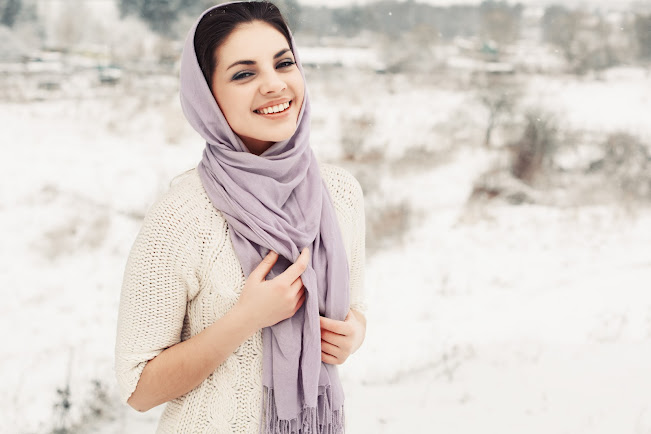BURQA, HIJAB, NIQAB - DO YOU KNOW THE DIFFERENCE?
The most conservative and most extreme form is certainly the burqa, other variants are more tolerant. The methods of veiling in Muslim countries are determined by the laws, traditions, but also the very convictions of Muslim women. The history of veiling is almost a thousand years old in the Orient, initially a fashion accessory became a symbol of honesty and orderliness. Interestingly, the tradition of covering women's faces has almost disappeared. In recent decades, however, it has re-entered the course, for many reasons - in some cases it is the very decision of a woman who sees veiling as freedom, other times it is out of genuine religious beliefs and often the command of the Muslim community to wear certain types of clothing and severely punishes the violation.
Burka
Burqa is the most conservative and extreme form of veiling. In this case, it is not just about covering the face, but basically the whole body. The burqa is worn in casual clothes and the wearer observes the world around her only through a thick grid around her eyes. The woman only undresses her at home or in the shrine. The problem with the burqa is that no one around has a chance to know who is hiding under the burqa.
The burqa is worn mainly in Afghanistan, Pakistan, Bangladesh and the Emirates. The burqa is mandatory for every woman. In some areas, violating this order poses a risk to one's own life, whether condemned or publicized. There are several known cases of stoning by the crowd directly on the street.
Hijab
The most common form of veiling is the hijab. This scarf covers the hair, shoulder, décolleté and neck. It is worn in Muslim countries with more lenient laws or in countries where cover is not even required. That is why we often see it in Arab women living in Europe.
Hijab is not a problem. Even with this head covering, a woman is easily identifiable and can take pictures with him, for example, on an identity card or passport.
Niqab
Niqab is often mistaken for a burqa. However, the burqa is one piece of clothing, while the niqab is a veil that covers everything but the eyes in the face. Women often wear abaya, a clothing that covers the whole body, and this combination is reminiscent of a burqa. The purpose of abaya is to cover the shapes of a woman's body so that it does not attract attention. You can also meet maxi abaya. This piece of clothing is a bit closer to the burqa, because it is a combination of niqab and abaya in one piece of fabric. The milder form of niqab allows the eyes, forehead and nose to be exposed.
Niqab is typically worn in Saudi Arabia, Qatar and Oman and is most often black. Due to the temperatures that prevail in the Persian Gulf area all year round and often reach a temperature of 45 degrees, wearing a black veil is a truly heroic performance.
Other forms of female veiling
Chador - A cloak that completely covers a woman in addition to her face. It is worn in some rural areas of Iran.
Hashmak - A transparent veil often known from movie scenes where harem dancers perform. Hashmak covers only the mouth and is typical of Turkey.
Amira - Like chador, it covers everything except the face. However, it consists of two parts and from an aesthetic point of view it does not look like an shapeless bag.
Shajla - A scarf covering the head and shoulders, which is often complemented by black gloves. It is usually taken as a fashion accessory and can be bought in different colors with different motifs.
Turban - It is typical for men, but it is also popular with Turkish women.
Burkini - Full body swimwear that meets the requirements of the hijab. Their name is a combination of the words burqa and bikini.



Comments
Post a Comment